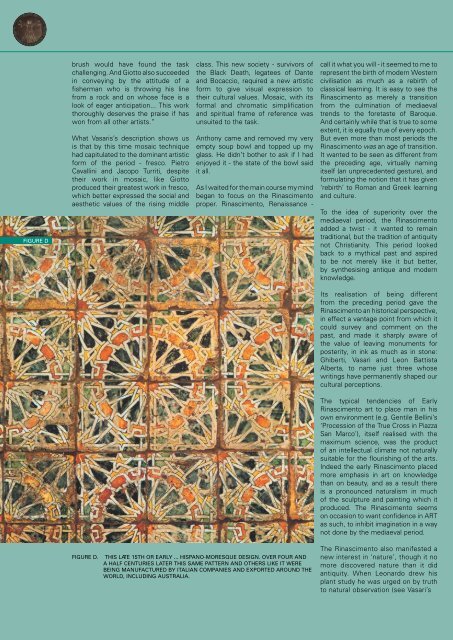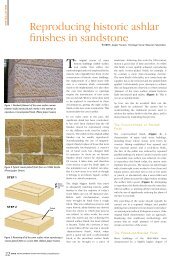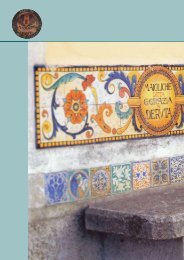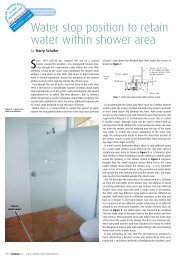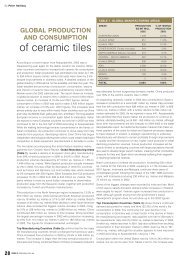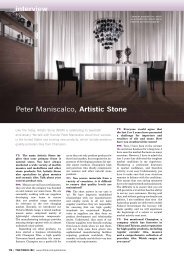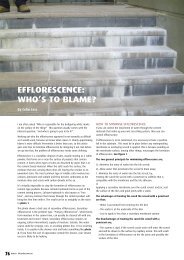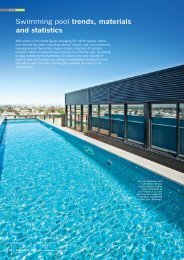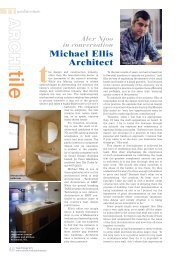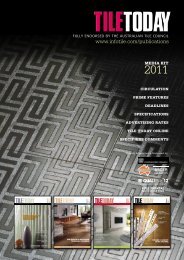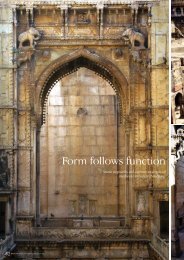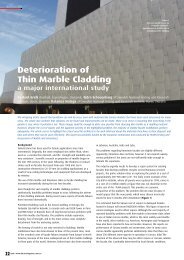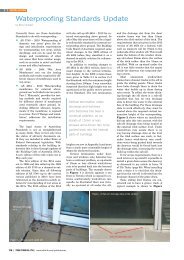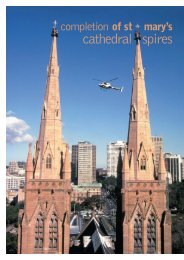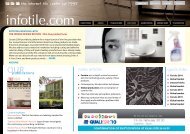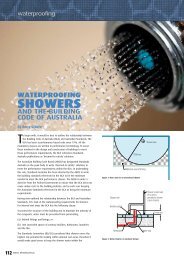A history of Italian tiles - Infotile
A history of Italian tiles - Infotile
A history of Italian tiles - Infotile
Create successful ePaper yourself
Turn your PDF publications into a flip-book with our unique Google optimized e-Paper software.
figure D<br />
brush would have found the task<br />
challenging. And Giotto also succeeded<br />
in conveying by the attitude <strong>of</strong> a<br />
fisherman who is throwing his line<br />
from a rock and on whose face is a<br />
look <strong>of</strong> eager anticipation... This work<br />
thoroughly deserves the praise if has<br />
won from all other artists.”<br />
What Vasaris’s description shows us<br />
is that by this time mosaic technique<br />
had capitulated to the dominant artistic<br />
form <strong>of</strong> the period - fresco. Pietro<br />
Cavallini and Jacopo Turriti, despite<br />
their work in mosaic, like Giotto<br />
produced their greatest work in fresco,<br />
which better expressed the social and<br />
aesthetic values <strong>of</strong> the rising middle<br />
class. This new society - survivors <strong>of</strong><br />
the Black Death, legatees <strong>of</strong> Dante<br />
and Bocaccio, required a new artistic<br />
form to give visual expression to<br />
their cultural values. Mosaic, with its<br />
formal and chromatic simplification<br />
and spiritual frame <strong>of</strong> reference was<br />
unsuited to the task.<br />
Anthony came and removed my very<br />
empty soup bowl and topped up my<br />
glass. He didn’t bother to ask if I had<br />
enjoyed it - the state <strong>of</strong> the bowl said<br />
it all.<br />
As I waited for the main course my mind<br />
began to focus on the Rinascimento<br />
proper. Rinascimento, Renaissance -<br />
call it what you will - it seemed to me to<br />
represent the birth <strong>of</strong> modern Western<br />
civilisation as much as a rebirth <strong>of</strong><br />
classical learning. It is easy to see the<br />
Rinascimento as merely a transition<br />
from the culmination <strong>of</strong> mediaeval<br />
trends to the foretaste <strong>of</strong> Baroque.<br />
And certainly while that is true to some<br />
extent, it is equally true <strong>of</strong> every epoch.<br />
But even more than most periods the<br />
Rinascimento was an age <strong>of</strong> transition.<br />
It wanted to be seen as different from<br />
the preceding age, virtually naming<br />
itself (an unprecedented gesture), and<br />
formulating the notion that it has given<br />
‘rebirth’ to Roman and Greek learning<br />
and culture.<br />
To the idea <strong>of</strong> superiority over the<br />
mediaeval period, the Rinascimento<br />
added a twist - it wanted to remain<br />
traditional, but the tradition <strong>of</strong> antiquity<br />
not Christianity. This period looked<br />
back to a mythical past and aspired<br />
to be not merely like it but better,<br />
by synthesising antique and modern<br />
knowledge.<br />
Its realisation <strong>of</strong> being different<br />
from the preceding period gave the<br />
Rinascimento an historical perspective,<br />
in effect a vantage point from which it<br />
could survey and comment on the<br />
past, and made it sharply aware <strong>of</strong><br />
the value <strong>of</strong> leaving monuments for<br />
posterity, in ink as much as in stone:<br />
Ghiberti, Vasari and Leon Battista<br />
Alberta, to name just three whose<br />
writings have permanently shaped our<br />
cultural perceptions.<br />
The typical tendencies <strong>of</strong> Early<br />
Rinascimento art to place man in his<br />
own environment (e.g. Gentile Bellini’s<br />
‘Procession <strong>of</strong> the True Cross in Piazza<br />
San Marco’), itself realised with the<br />
maximum science, was the product<br />
<strong>of</strong> an intellectual climate not naturally<br />
suitable for the flourishing <strong>of</strong> the arts.<br />
Indeed the early Rinascimento placed<br />
more emphasis in art on knowledge<br />
than on beauty, and as a result there<br />
is a pronounced naturalism in much<br />
<strong>of</strong> the sculpture and painting which it<br />
produced. The Rinascimento seems<br />
on occasion to want confidence in ART<br />
as such, to inhibit imagination in a way<br />
not done by the mediaeval period.<br />
figure D. This late 15th or early ... Hispano-Moresque design. Over four and<br />
a half centuries later this same pattern and others like it were<br />
being manufactured by <strong>Italian</strong> companies and exported around the<br />
world, including Australia.<br />
The Rinascimento also manifested a<br />
new interest in ‘nature’, though it no<br />
more discovered nature than it did<br />
antiquity. When Leonardo drew his<br />
plant study he was urged on by truth<br />
to natural observation (see Vasari’s


